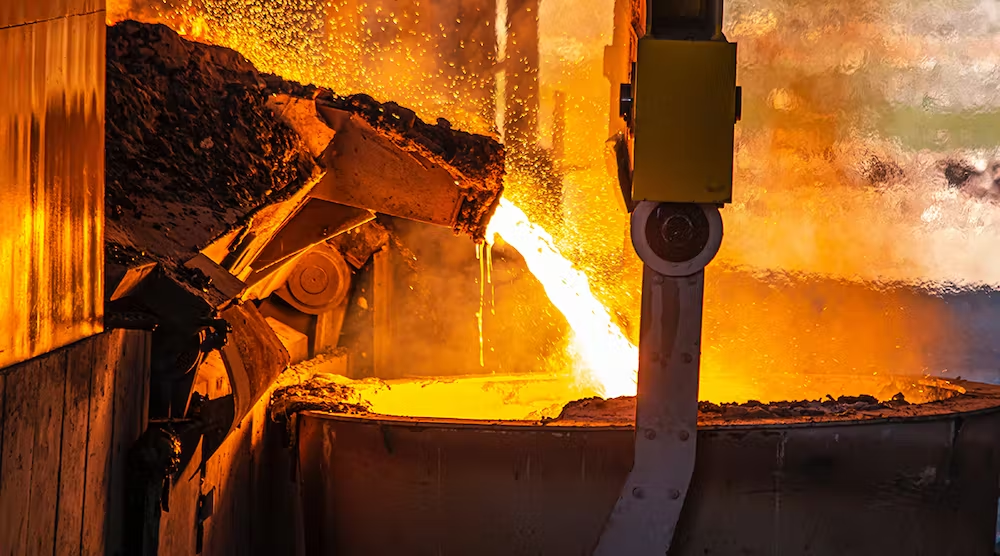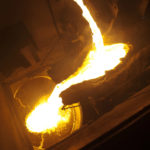Iron oxide threatens all iron-melting processes. In cupola melting, much greater amounts of iron oxide are produced during the normal melt cycle than are produced in electric furnace melting. This makes iron oxide’s effect much more pronounced in cupola melting. In EF melting, 20%-30% oxidation loss is the extreme of losses encountered. In cupola melting, in the worst-case scenario, the oxidation losses approach 65%. Carbon oxidation losses remain unknown to this day.
When a cupola is first started, blast air “burns-in” the coke bed. During this phase, no iron oxide is produced because no iron is melted. The blast air simply preheats the coke, preparing for the upcoming melting campaign.
Once metallic charging and melting commences, blast air contacts the molten metal droplets as they descend through the oxygen-rich layer immediately in front and above the cupola tuyeres. This oxygen-rich high-temperature zone (5,000°F) in the cupola causes iron-oxide formation on the droplet’s surface and vaporization of a portion of the iron oxide formed. The FeO gas spreads throughout the cupola, leading to FeO contamination of the entire cupola.
Iron oxide causes significant chemistry losses, both carbon and silicon. The graph below shows silicon loss as melting progresses in a 35-tph cupola. Silicon loss finally reaches steady-state when FeO exiting the cupola contained in slag equals the FeO being produced by blast air contact with the molten metal.
Read more: Controlling Conditions for Cupola Melting






